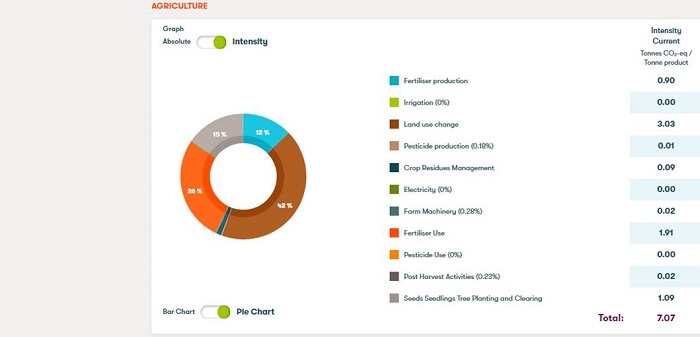
In this special guest feature, Jono Marcus, Behavioral Insights Director and Digital Project Owner for AtSource.io, Olam’s sustainability insights platform, at Olam International Ltd., explores how behavioral science can make complex data meaningful and useful. He has worked at Olam for the last three years across marketing, behavioral science and digital technology disciplines, having spent the prior twenty years both in-house and agency-side at firms such as Cake/Havas and H+K Strategies. He has consulted for large global business in developed and emerging markets, including Unilever, P&G, Roche, and Intel, as well as having run behavioral consulting and software agencies.
Data rich and data heavy platforms in the agriculture sector are as complex and nuanced as the social and environmental challenges we face. So, they need a strong sense of editorial to be digestible enough to drive user decisions, actions, and lasting behavior change. On our AtSource platform, which connects customers of coffee, cocoa, and other crops with their supply chains, this has been achieved through tailored data presentations (or personalized user experience) and through responding to rapid testing and implementing the latest behavior science findings.
Different Data Presentations
We have had to find interesting and sticky ways for our users to experience large datasets across very different user interactions, or behavior cases.
Here’s a real-life example of these different behavior cases: Bob based in NYC who is leading Brand X’s Coffee Sustainability division may be very interested in seeing a score board on child labor remediation in Nicaragua because it impacts his supply chain with Olam. Scoring in this area could help drive decisions to do even more to mitigate the issue from a sustainability point-of-view, as well as share news and proof points of that success with his stakeholders.

However, Jane in procurement in Brand Y is much more interested in interrogating a contract generated map of the journey of her raw product, showing its complete impact footprint (how it affects social and environment measures, such as carbon emissions and worker access to education). This helps her confirm her awareness of her brand’s impact on these issues and inform her future purchasing decisions, balancing cost and investments in sustainability.
Each require data to have a different focus as they will go on to use it differently. Bob in the Brand X’s Coffee Sustainability division for use in his company’s annual specialist Sustainability report; versus Jane’s need to assess value of the contract per bag of product in spreadsheets she will share with her Finance Director. When we design our user experience, we must deal with the behaviors of these users in both Sustainability and Procurement teams, as well as brand managers, C-Suite and Communications, making the data work for all.
This means we try to never show data results as reassuring or concerning for our different users without indicating the context of why it may be so, as well as making a point of explaining where data may be missing or inconsistent. Our intention is to make context king on the platform, which requires a rigorous approach to transparency; so, we also show comparisons to baseline years, country averages, and against previous years of data.
Using Behavioral Insights and Rapid Testing
If we want to ascertain how best to provide useful data to a certain type of user, we take evidence from behavioral studies and then experiment with a rapid test and learn approach on the platform. Testing tells us what works better, and behavioral science seeks to tell us the mechanics of why that may be, so we can make better experiments the next time around.
This approach to testing and then changing features quickly from one sprint of development to the next replaced relying solely on ivory towered UXers or anecdote-based decisions from senior managers. For example, we thought we should place the main map showing a birdseye view of all customers’ farmer groups very early front and center on the platform, as it really contains a microcosm on one image of each user’s key data.

However, because maps are in fact hard to take in as data presentations before contextual copy provides a focus for it (the phenomenon is called “focalism bias” in behavioral science and it’s seen in neuroscience when people have difficulty in perspective shifting when trying to decipher maps), our behavioral analyses and observations of users on the platform led us to quickly move the map lower on page one of the dashboard and make it more discreet. We would not have done this if we only treated the masses of data on our platform in terms of what would be a most logical UX for it, we would not be appreciating that as humans and users: “The conscious brain thinks it is the Oval office, but it is actually the Press Office” (Jonathan Haidt).
When displaying data, we want to drive a feeling of motivation and positivity for users to take or suggest actions to improve impact footprints., which we address by using bright signpost colors on metric tiles that create a sense of reward for success, as well as clearly showing data trend lines and providing flip tiles with actions on the back that show how Olam can and will improve certain results.
Taken together, our two-track approach of tailored data and varied data presentations and behavioral science-led testing and learning has resulted in supply chain data that is consumable and actionable to effect real change in the world.




Speak Your Mind